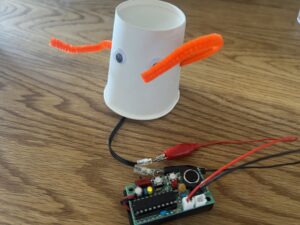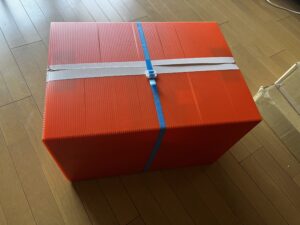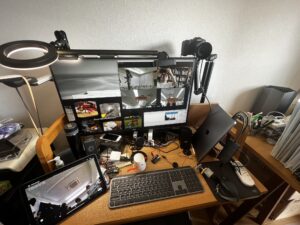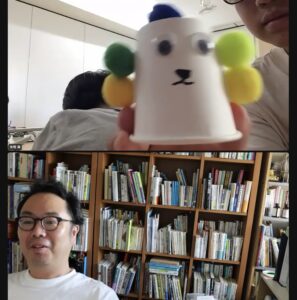
On July 27, for the first time, we held a remote workshop using Chobittobox at an after-school children’s club. This time, since the target audience was mostly younger children, we made a toy that works without using a computer, using a programmable battery.
At first I was a bit frustrated because the iPad and mobile router I sent for the Zoom connection did not connect to the Internet properly. After resetting the equipment, we were able to get a good connection, and we were able to conduct the workshop. This was thanks to the people who supported us at the site.
After learning how to use the equipment, the children also enjoyed creating their own works of art.
I was very happy that they came to show their works to me, a remote participant, and said, “Look at this! I was very happy that they came to show their works to me, even though I was participating remotely. This is the same as the most joyful moment when we have a face-to-face workshop.



Below are some notes I wrote for myself.
I will go looking for tips for the next workshop.
First, you need to be connected to a network.
Equipment should be packaged.
It is hard to distribute parts one by one.
Role of local staff is important.
→A presence to get between you and the children.
If possible, have them experience the tools beforehand.
When working remotely, be willing to take three steps back.
Do not try to force the children to be involved remotely,
Wait until they need you. Wait for them to call out to you.
Remote communication as an icebreaker before the start of the event, remote rock-paper-scissors-paper, etc.
Eyeballs are effective as a tool to see what is going on at the venue.
How to support the participants when they are able to perform complex operations such as actual programming?
Using a hand-held camera to show what is going on is also effective.
Need to keep the desk tidy.
The small sample size may be more of a remote influence on the work. Almost everyone was making paper cup robots.
Zooming in on a workshop is a good way to observe a workshop.
How to analyze the video recordings of the workshop?
→The idea is to analyze how much and how you, the facilitator, talked to the participants.
The eye-opener as a link between the children at the venue and the staff working with them remotely.
Communicate with local staff, but very important.
As much as possible, simplicity in tools and activities.
Simple, but we can devise various ways.
→Low floor, high ceiling, wide wall rule.
A sense of accomplishment and reflection after the workshop.
The way things come and go is the same as in a face-to-face workshop.
If we could call out to them by name, we might be able to expand our communication a little more.
→It is difficult to remember children’s names.
We send them with all power off and ask them to turn it on at a low power level.
→This may reduce the possibility of network problems.
We need to make sure we have a way to contact them if we can’t connect to the network, cell phone, etc.
Linking blog posts to the workshop record.
We would like to try remote documentation and reflection.
Visitors not only as observers, but also as a presence to see the work of workshop participants.
A child dancing to the rhythm of a buzzer.
A child who changes the direction of a paper cup, changing the rhythm of the motor, watching the changes closely.
